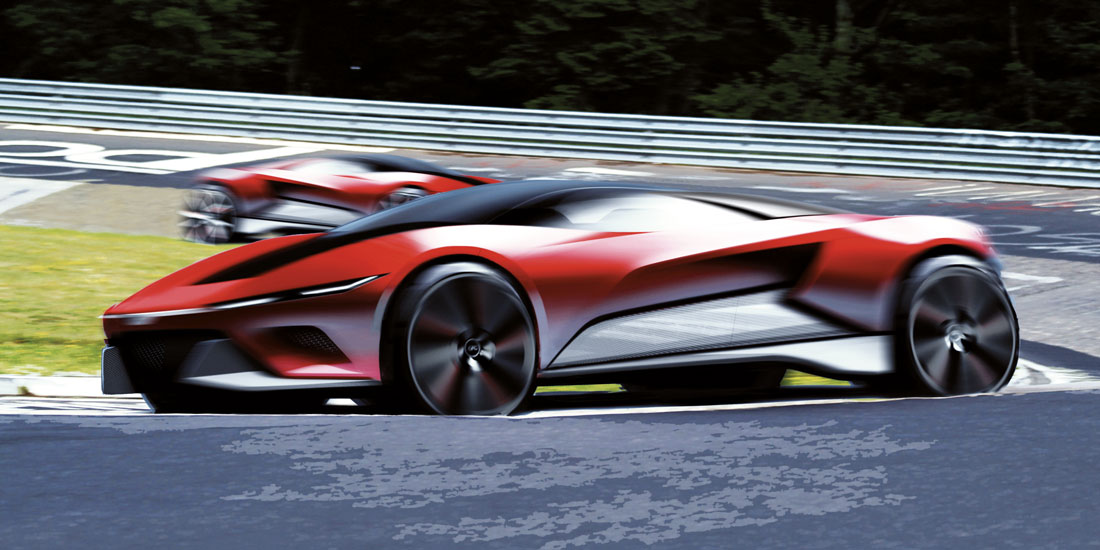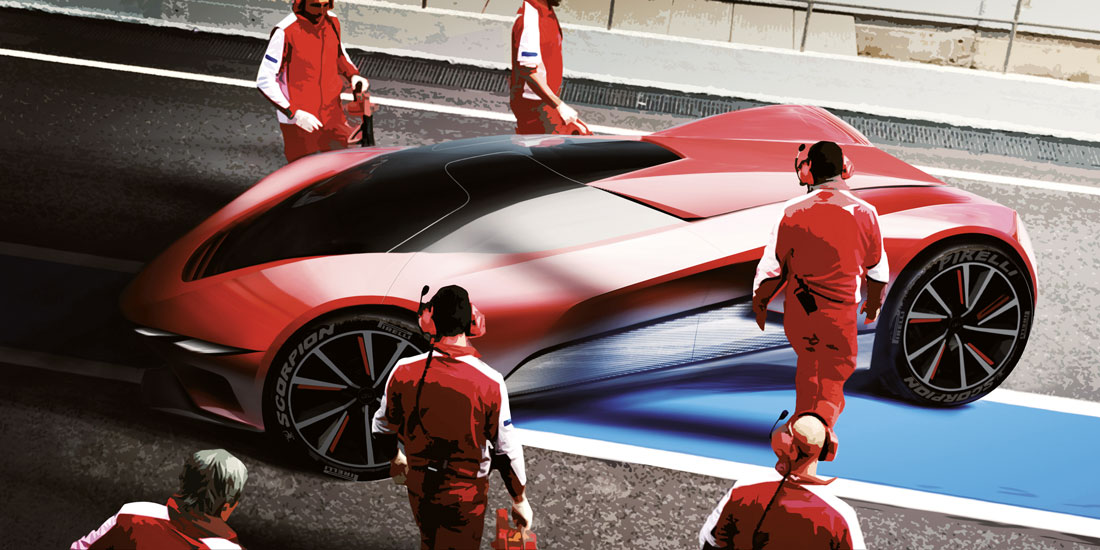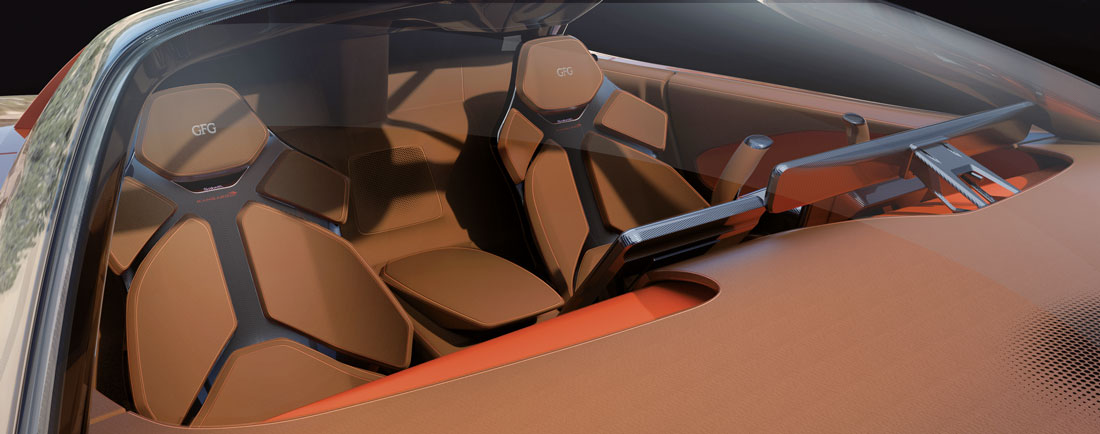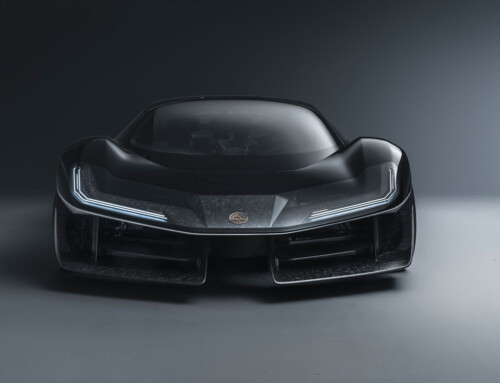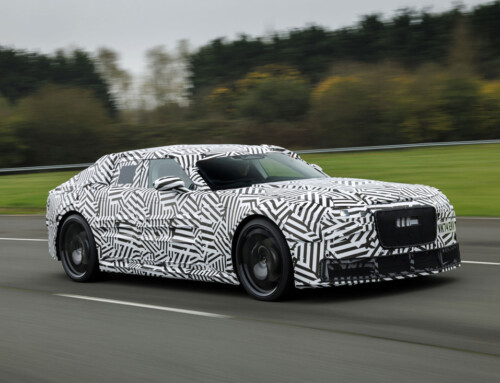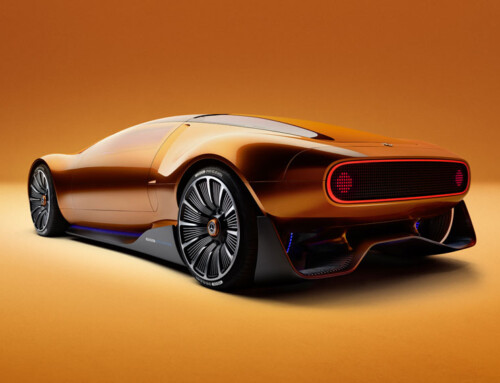To escape traditional typologies and their related limitations of use, imagining an alternative mobility not so much in its propulsion, which is obviously electric, but in the search horizon of the pleasure of driving. “This is a hedonistic car,” begins with a smile Fabrizio Giugiaro, son of the famous Giorgetto with whom he shares the helm of GFG Style: “A two-seater decidedly high performance hypersuv, with ‘tense’ lines like those of a coupé and equipped with an interior that could evoke atmospheres worthy of a Miura. In short, a product that is so enjoyable that I thought it would be a shame to limit it to roads!”, he continues with enthusiasm. “The idea had already emerged in 2013 with the Parcour, which was developed under the Italdesign brand. In the Kangaroo, however, propulsion is electric: a choice that has allowed us to make the most of our existing partnership with the Chinese manufacturer CH Auto, which provides the technical base.”
Underneath the aluminium structure, with carbon fibre panels, we find the mechanics of the
Qiantu K50, a powerful zero-emission roadster that the Asian group introduced earlier this year. This approach has simplified some of the engineering phases, without however influencing the stylistic crux which was more complicated in its solution: “How high from the ground does a car like this look ‘good’? This appears to be a trivial question, but since the suspensions’ travel is 120 millimetres, the balance of the looks can change a lot depending on how you use them. We have optimised the effect with an intermediate position, albeit not ignoring the other adjustments of the trim and taking care of the sizing of the wheel arches. The goal was to make the Kangaroo visually satisfactory under all conditions, the same way as it is dynamically.”
The proportions of the entire bodywork, on the other hand, are deeply conditioned by the wheel group, which reaches a height of 900 mm: the dimensions needed to associate the 22″ rims, designed in collaboration with Mak by mixing aesthetics and resistance, with high shoulder tyres able to effectively tackle any type of terrain.
“Everything about this car is related to performance, no stylistic whims are expected,” explains Giugiaro. “For example, the decision to adopt a rather long bonnet, which might seem dictated by the desire to recall the sports cars of the past, actually stems from the observation that placing the windscreen any forward would have entailed an increase in weight and complexity. We preferred to cut on the excesses and stick to sharp but essential well calibrated shapes, also to reduce costs, just in case of a possible, although currently unlikely, production in series.”
Inside, this concept translates into a cosy and almost racing-like environment. “When it comes to electric, some people aim for absolute minimalism, but we pursued another path here. On the most rugged roads it’s important to keep an eye on what’s going on around the car, so at the base of the windscreen there’s a large viewer that recaps the images sent by different cameras, sided by the large touch screen on the centre console and, of course, by the reconfigurable digital instruments.”
Even in the cabin, therefore, details go in the direction of versatility which, as Fabrizio confirms, “has always been present in Giugiaro’s research.” Does anyone remember the two extraordinary typological experiments called Machimoto and Asgard?
(Full article in A&D no. 236)

